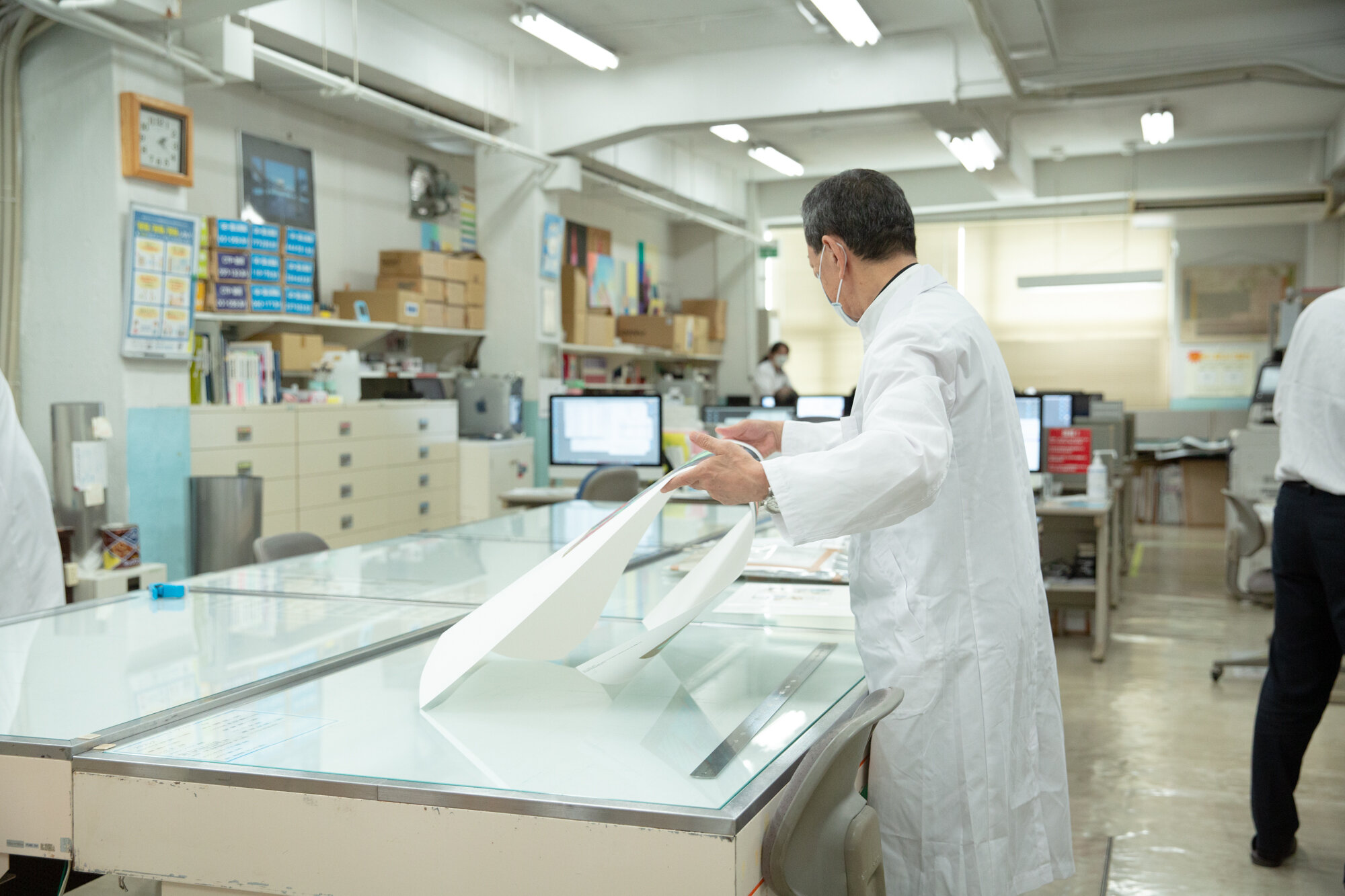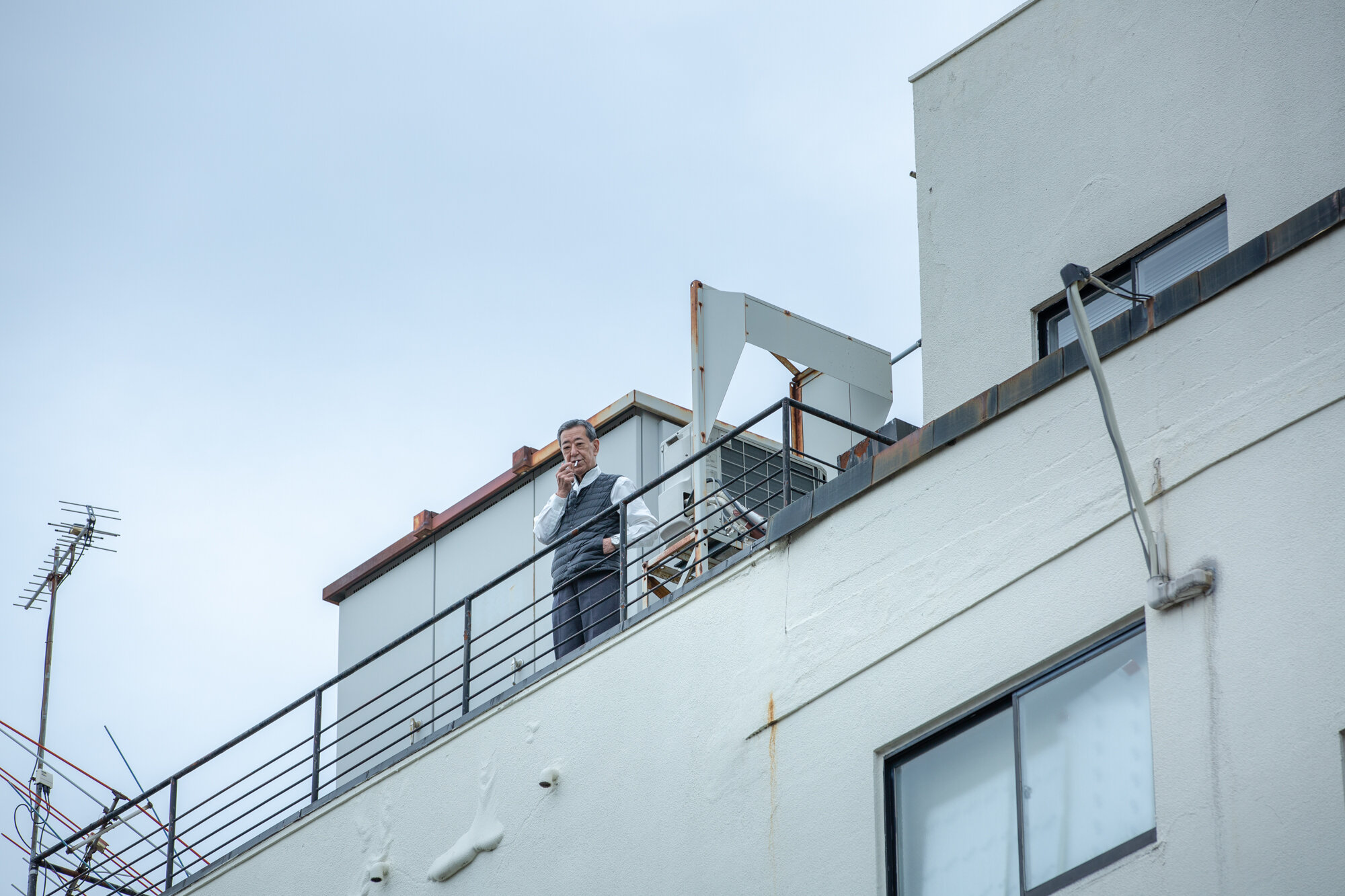
Solegraph is the name for Yamada Photo Process’
high-grade ink-jet art prints.
“Solegraph is a digital art print technique which we have cultivated over many years, using our expertise in image development, alongside cutting edge color management techniques. In addition to its English meaning, 'sole' also signifies 'the Sun' in Italian.”
— Katsumi Kumakura
Katsumi Kumakura is the printing director at Yamada Photo Process, a leader in Japan’s graphic industry.
His nickname is “print kami sama”, the “wizard of print”.
White coats in the lab
Today’s Yamada Photo Process Co. was founded in 1921 as Yamada Shashin Seisakusho (Yamada Photoengraving Co.), starting with glass plate making. Later, the company engaged in letterpress and offset printing, and developed digital art prints using the ink-jet method. Today YPP is a general printing house, but dares to keep the "photo" in the company name. In the days of photoengraving, the workers wore white coats to prevent dust and static electricity and ever since the workers wear them. The company is highly regarded for its advanced techniques in color and image processing, and is involved in many projects related to art, including the production of artists' works, digitization of museum collections, and catalog production.
After an illustrious career working with graphic design legends like Yusaku Kamekura and Ikko Tanaka, Katsumi Kumakura received a job offer from YPP and decided to move to Toyama. His first mission was to instruct workers on the importance of keeping the printing machines clean, focusing not just on technical matters but on ways to boost morale and the work ethic of young employees. His goal is to produce high-quality printed works which appeal to all five senses and which even the biggest presses in Tokyo cannot match.
Scanning
There are two main types of scanning methods: dual-light, which uses two light sources to capture the image, and single-light, which uses only one light source. Usually the former is used, but the latter is used when you want to emphasize the three-dimensional effect of the object. The resolution is 350 dpi, and the color tone is adjusted before capturing. Mr. Kumakura believes that older scanners are rather more accurate and are becoming more valuable these days.
The production background of Metropolis was scanned with a dual-light source because it was very smooth, and the RGB color space was used because of its vivid colors.
Mr. Kumakura and his staff assessing an original artwork by Hiromasa Ogura for Patlabor - The Movie (1989), one of our next projects.
Assessment of the original work
The scanning operator team checks the original work brought in and discusses the scanning method and color representation method according to the texture and color of the work. It makes a big difference whether the RGB or the CMYK color space is used for the reproduction process. The choice depends on the texture of the paper and the gamut and intensity of the tonal values. A considerable amount of time is used to decide how to reproduce details best.
Where the magic happens:
color adjustment
For the reproduction of animation artworks, it is necessary to use the right combination of paper and ink in order to reproduce the richness of the original artwork’s colors. This often requires the use of color pigments that lie outside of the standard CMYK color profile, and so careful consideration must be made with every image to ensure that the original quality is preserved. The scanned data is brought closer to the original image by adjusting the color to match the characteristics of the output paper.
These adjustments are executed incrementally in small steps. The test print is once again compared with the original artwork, and if there are still some areas of the print that require retouching, the technician will again revise the digital data until a faithful reproduction is achieved. Color adjustments and test prints are repeated at least four times. Creating the color profile for the final printing data is the most time-consuming part of the process and the heart of Mr. Kumakura’s printing magic.
Original paper
Yamada Photo Process uses custom made premium paper with a weight of 270 g/m². The paper has a brilliant white surface with a velvety touch. With its ability to reproduce a wide gamut, it is ideal for monochrome and color photographs, paintings, and other fine art reproductions. The base paper is made from pulp which has had lignin, a source of yellowing, removed during the production process. It is 100% alpha cellulose and acid-free, making for a long-lasting, durable paper.
The paper of the original drawings is actually not very long-lasting and often shows signs of decay after a few years of storage.







